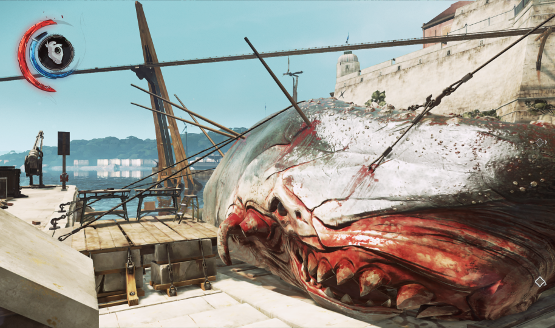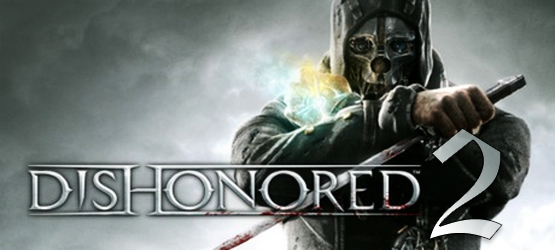
The original Dishonored impressed us with the great freedom of choice when it came time to completing an objective. Four long years later, the sequel is finally upon us. So has Arkane Studios proven that this still-new IP has the longevity needed of a franchise?
Dishonored 2 takes place 15 years after the events of the first game, and you begin as Emily Kaldwin, the (rather reluctant) Empress of Dunwall. An unexpected visit by the Duke of Serkonos and a mysterious guest leads to your dethronement, and thus the real game begins. If this story feels familiar, that’s because it’s fairly similar in theme to the original game. However, you can play as either Emily or loyal bodyguard Corvo, with different stories and powers. Corvo does have a voice this time around, in stark contrast to the first time we met him. While this may break immersion for some people who prefer their first-person protagonists to be mute, it is necessary to tell the story being told here.
The majority of your time will be spent in the new city of Karnaca, and several of its many districts and landmarks. The art style is similar to the original Dishonored, but has its own flair all its own. With a clear influence of Europe in the middle of the 19th century, there are a lot of sights to take in. Cobblestone roads, tight corridors, rats, whale oil-fueled lamps, and offensively loud pistols all add up to a very detailed, believable world that you can quickly get lost in. Arkane Studios reportedly spent a year inventing the city’s history, and it shows, with journals, newspapers, and other clippings strewn about the city, adding to lore which you are free to read to gain some knowledge about the city, or ignore entirely. Like most everything else in Dishonored 2, the choice is yours.
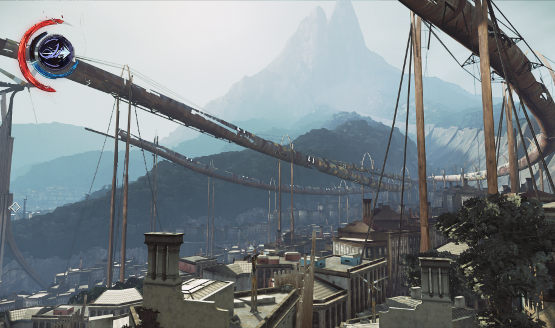
Must…Play…Again
As if playing though the game as a different character wasn’t enough to lengthen your play time, you can also opt to play without powers entirely. Mercifully, while the Platinum trophy does require you to play through the game at lease once in this manner, it does not require playing through Dishonored 2 with no powers, while simultaneously never being spotted nor killing anyone, though I’m sure someone will achieve this amazing feat shortly. Expect an average, just-enjoying-the-story runthrough to take approximately 15-20 hours, while finding every nook and cranny, and especially attempting to never be detected to increase your time to completion considerably. The game is spread out across nine missions, with the playtime of each mission taking between one to two hours, depending on which, if any, side missions you complete.
As for the powers themselves, well, several have been tweaked from the game before, while Emily introduces a few new powers of her own. Corvo starts his game with his powers taken from the usurper of the throne, and Emily never had them to begin with, until a visit from The Outsider changes all of that. There are six core powers to earn, with each character having unique powers while sharing some core abilities. The powers can be combined, as well, in interesting ways. For instance, as Emily, you can summon a Doppelganger, then use Domino to link one or more enemies to that Doppelganger. Killing or otherwise incapacitating your clone will result in the same fate befalling the linked enemies. This can make attempts of non-lethal runs at a level a little easier, since now knocking one enemy out can knock out up to three more, once the power is upgraded.
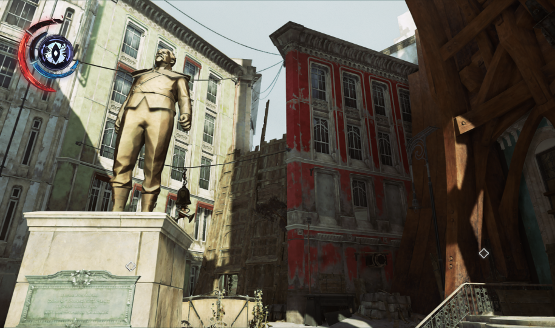
Upgrade for Unexpected Results
Upgrading powers is done by finding runes hidden in out-of-the-way locations throughout levels. Many are located within the nests of a new pest to contend with — bloodflies. These are more difficult to kill than the original game’s rats, though rats are present as well and will fight the bloodflies. If you leave a corpse around near where bloodflies like to congregate, they will lay larvae inside the bodies, and you’ll soon have a new swarm of the small killers to contend with. This means that you have to cleanup many of your kills, or at least move the bodies to somewhere out of the way. You can also find and equip bone charms, which can grant boons, while some corrupted bone charms will offer you a benefit while also taking something away. As if that wasn’t enough, you can also craft your own bone charms, with varying effects and chances of corruption.
Once you’ve acquired enough powers, your controller will quickly feel very cramped. Since this is a first-person game, the shoulder buttons are already spoken for, especially when you have your right hand permanently assigned sword duty, and your left hand tasked with handling weapons and firing off powers. You can only map powers and/or weapons to one of the four directional pad buttons, while holding L1 will show you a quick select wheel while time slows down (but does not stop). Meanwhile, R1 blocks using your sword. The Triangle buttons feels a bit under-utilized, as a lean mechanic that isn’t really used unless you’re going for a no-detection run. The controls take some getting used to, but work just fine most of the time.
To give you an idea of the staggering number of ways in which you can complete a level, here is but one example. I was trying to subdue a master inventor, who was protected by mechanized robot soldiers who can see in both in front and behind. My goal was to incapacitate him, as I was trying to get a relatively low level of chaos, the game’s built-in mechanism which determines how the story plays out and ultimately ends, based on such factors as the number of innocents and key story characters killed in each mission. Anyway, my plan was to lure the enemy out from where he was hiding, and lay a stun mine on my way into a doorway in front of an elevator I could use to get out of his sight. I stepped out for second, only to be confronted with a robot that I did not know was in front of the enemy. These are tough robots, so I quickly went back from where I came, looked down, and planted a stun mine…right onto a passing rat. The mine attached to the vermin, which then went unexpectedly running towards the enemy I was supposed to take out. Sure enough, the mine detonated, and I knocked out both the character I was there to stop, and his pet robot. It was an unexpectedly devious way to take out the enemy, but shows just a few of the ways in which you can play with Dishonored 2‘s many mechanics.
A Change of Engine
While the original Dishonored was built with the Unreal Engine 3, Dishonored 2 has swapped most of that out for a custom-built “Void” engine, which is itself based off id Tech 5. The result is some general graphical improvements, especially in the areas of lighting and backgrounds. Some of the city expanses that you’ll see during your journey are breathtaking, to be sure. Yet, character models remain rather lackluster, and animations in particular can be pretty rough. Then again, when you’ve got several dozen characters contained within a very small area, it is impressive that the game does keep a consistently high frame rate throughout the experience. A completely unscientific guesstimate of Dishonored 2‘s frame rate would be around 30fps, and it is solid throughout most of the game.
One area that felt a little weak is Dishonored 2‘s AI. Now, granted, AI is very hard to program. But I saw multiple instances during my time with the game where an enemy would come running at me, only to tumble down a few stairs. This then left them completely open to attack. It was unintentionally the funniest part of Dishonored 2. Despite these enemies’ utter clumsiness, they did have efficient and believable pathfinding skills. If I made enough noise while out on a balcony, an enemy in the street below would look up, and if I ducked out of the way, they would quickly go inside the building, run up the stairs, and then check out the area where they heard the disturbance — this would usually end up in their demise, because of course I laid a trap for them, but still, kudos to them for being smart enough to be able to find the way!
Dishonored 2 is going to keep stealth game fans busy for quite a while this holiday season. Every level is meticulously crafted, with more emphasis on verticality to enhance some of the new powers introduced. Additional hidden level goals are discovered organically, and while enemies can be hilariously clumsy, they are also adept pathfinders. With a nuanced story, two protagonists to play as, and multiple endings, Dishonored 2 begs, or rather, deserves to be played again and again.
Dishonored 2 review code provided by publisher. For more information on scoring please see our Review Policy here.
-
Tons of choices
-
Challenging objectives
-
High replayability
-
Enemies can be dopey
-
Rough models, animation
Dishonored 2 Info Dump
-
Dishonored 2 - Everything You Need to Know

-
Dishonored 2 Announced at E3 2016

It was rumored that there would be a Dishonored 2, and Bethesda dropped the news at E3 2015, but they didn't show anything until E3 2016. But at that announcement, we learned two very important details:
- Players could play as either Corvo or Emily Kaldwin.
- Corvo finally has a voice.
-
Dishonored 2 Collector's Edition Includes Corvo's Mask, Emily's Ring

After their Fallout 4 Collector's Edition, Bethesda obviously likes to go big or go home with their CEs, giving fans plenty of tangible items to make the purchase all the more worthwhile. For the Dishonored 2 CE, players will receive the following:
- steelbook case;
- replica of Corvo's mask;
- replica of Emily's ring; and
- a poster of Delilah Kaldwin as the Empress of Dunwall
-
Everything About Emily Kaldwin Will Reflect She's an Empress
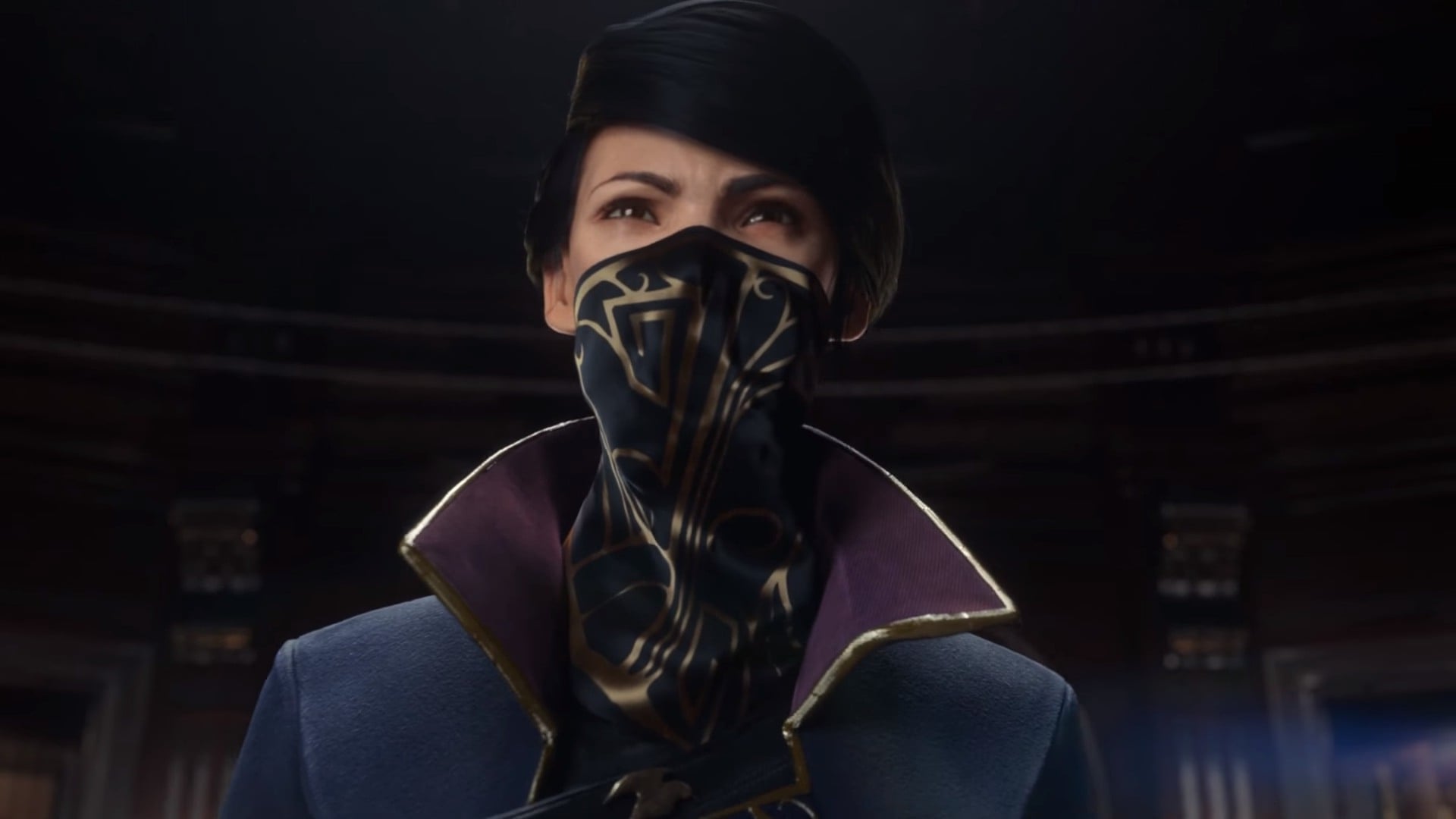
Aside from her mother's murder, Emily Kaldwin has lived the high life as the Empress of Dunwall. Even a witch stealing her throne from her doesn't change who she is at her heart, and this is reflected in not just her clothing but also her powers.
Creative Director Harvey Smith said about Emily:
Emily doesn’t wear rags. She wears an asymmetrical-cut jacket with gold embroidery befitting someone who grew up in a palace. She has taste and she has the finest tailors working for her. When she’s carrying a pistol or a crossbow, they need to look like they were made by the finest craftsmen in the Empire of the Isles.
Emily's powers from the Outsider also reflects her status. For instance, one power that is unique to Emily is Mesmerize, which enthralls enemies so Emily can either eliminate or sneak past them with ease.
-
Bethesda Revealed How the Abilities Changed at QuakeCon 2016
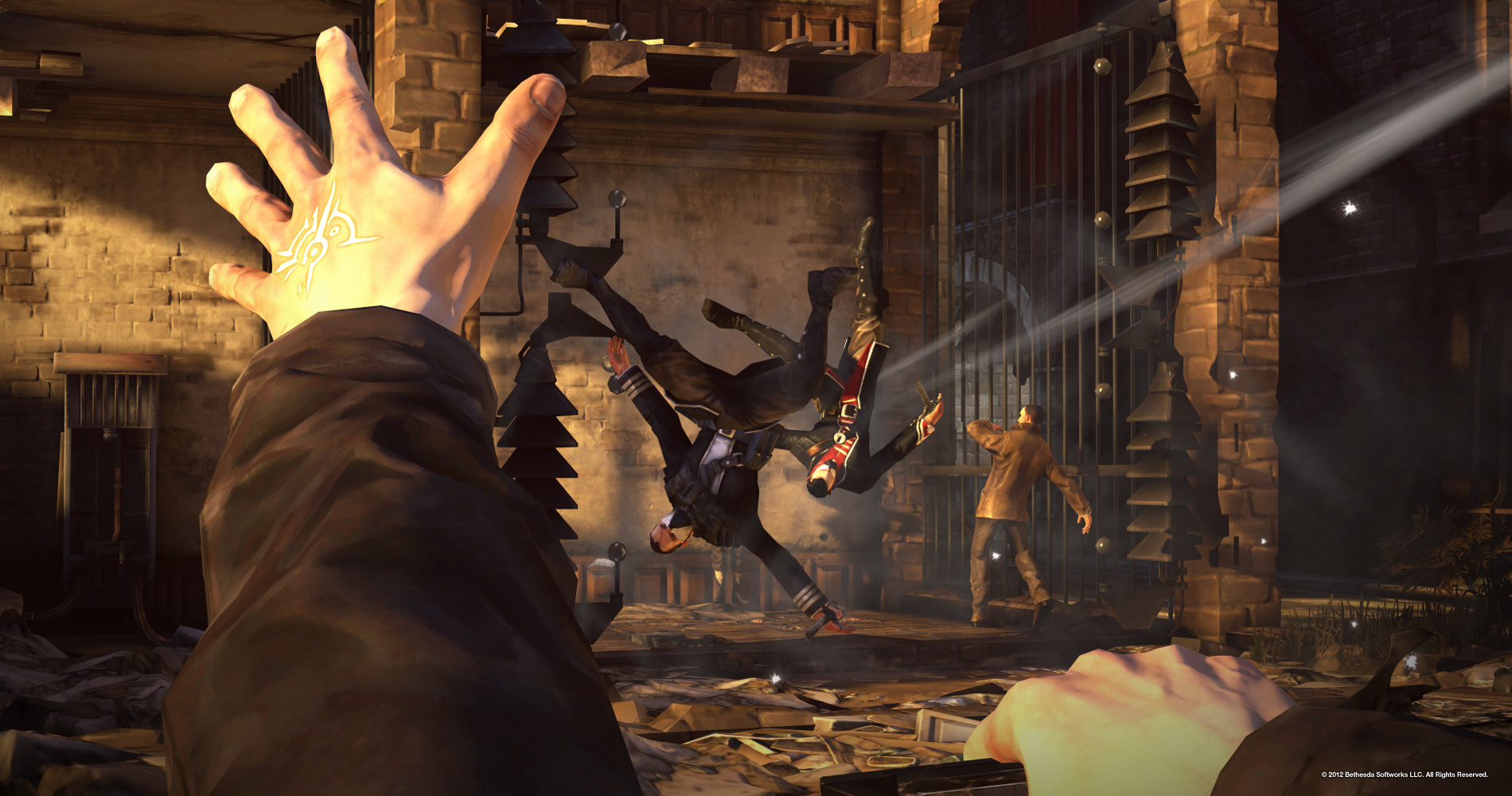
Bethesda announced Dishonored 2 at their E3 press conference, but they didn't reveal much until their annual QuakeCon a few months later in August 2016. At the show, the developer showed a demonstration of how Corvo's abilities have changed, especially his famous Blink ability.
Bethesda explained the changes in their blog:
And it all starts with Blink – Corvo’s signature traversal power. Our first glimpse of Blink shows us exactly what we expect to see: Corvo teleports from the ground to a balcony and ducks into a sealed building; Corvo instantly transports himself from a second-story window to some exposed ductwork across an alleyway. But Blink isn’t just for movement anymore. Twice we saw Corvo use his signature power in newly aggressive ways: blinking into a foe and immediately stabbing him in the neck, and later using it to slam into an enemy, shoving him back with deadly force
Bethesda's Gary Steinman posted some gifs on Twitter to show these changes in action.
-
Assassin Ability Upgrades Have Changed
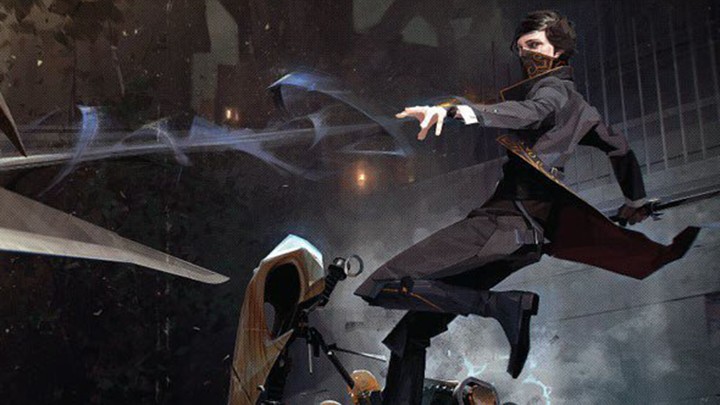
Emily has all new abilities in Dishonored 2 as she is an all new character. However, Corvo will have some changes to ability upgrades.
In Dishonored, you took the power, and there was one upgrade for it. Usually, that upgrade was: It works for a little bit longer, or it works a little faster. This time, we really wanted to do something more interesting than that, so we took the power, we gave you a good basic package of the power, and then we said, “How many different ways can we upgrade it?” We tried not to have symmetrical trees. We don’t care about, “Each [power] has three [upgrades],” or whatever. We say, “Whatever tree is under that power, based on what we can come up with, fine.”
For example, the Devouring Swarm ability Corvo developed from the first game now has possible upgrades for increasing the size of the swarms, commanding the swarm to follow him, or summoning two swarms of rats he can send in different places.
Emily's ability upgrades will follow in the same style, also giving more choices to the player.
-
Dishonored 2 Takes Place in Karnaca
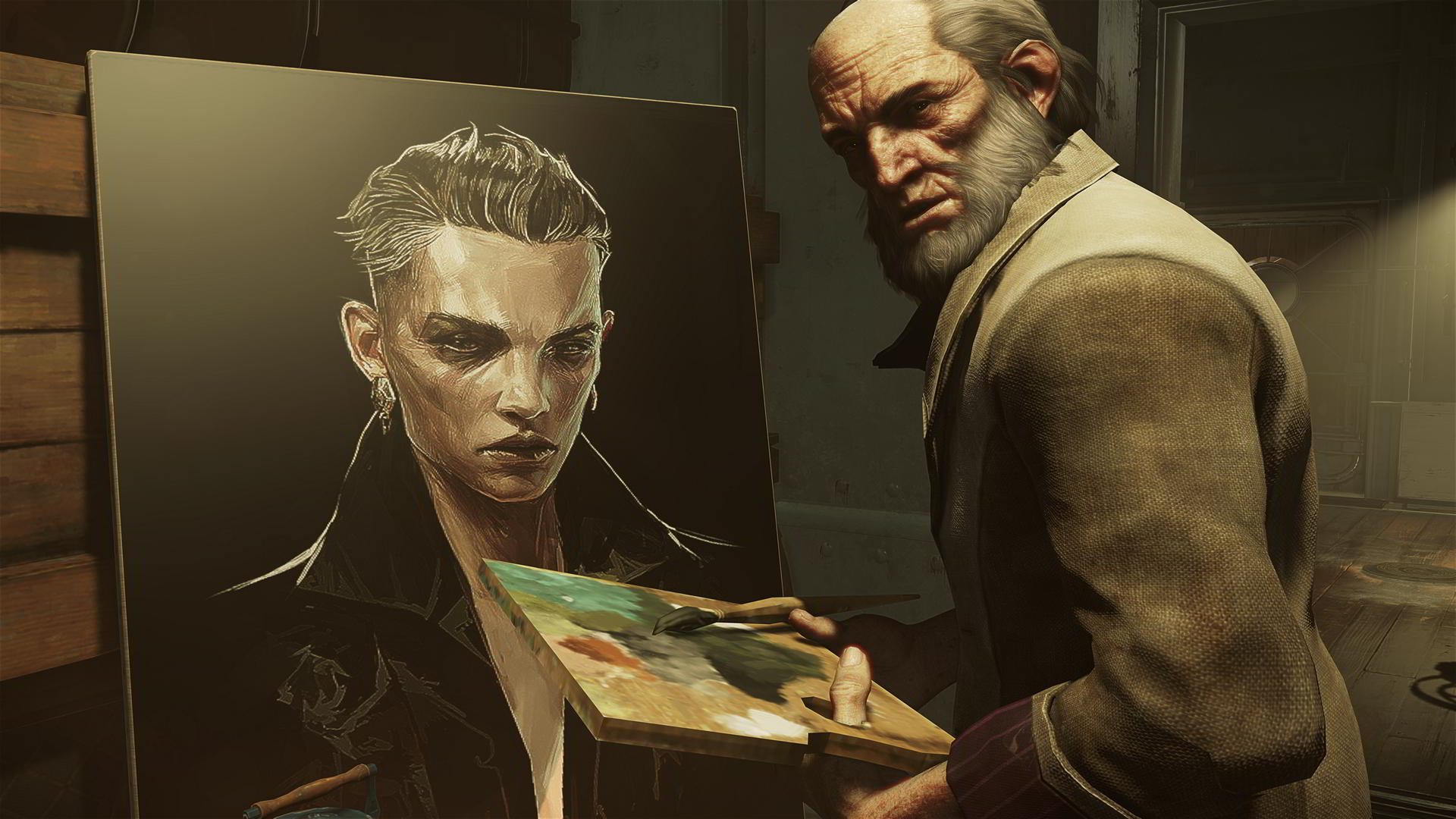
After the witch Delilah has taken the throne from Emily Kaldwin, the empress and Corvo flee to Karnaca. The coastal town will obviously be a refreshing change of scenery, even though Dunwall was pretty darn amazing, but developer Arkane Studios has also said that Karnaca will be a "new way to experience the game.
-
Corvo Attano Trailer
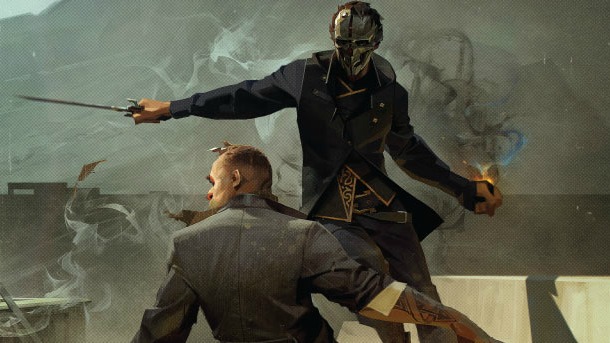
The excitement to play as Emily Kaldwin is quite palpable, as many are thrilled to have a choice in their gameplay. But the development team says don't rule Corvo out just yet. He has matured and grown since his last romp as an assassin.
Creative Director Harvey Smith said, “Corvo is like a man reflecting on the winter of his life. He’s both the badass supernatural assassin we wanted him to be, and he’s very thoughtful.” Lead Designer Dinga Bakaba added, “Corvo comes back with all his classic powers, made more active and more beautiful through our new engine technology, and each is also improved from a game design perspective.”
Check out Corvo Attano's spotlight trailer to see him in action.
-
Dishonored 2 Will Take Between 16-20 Hours to Complete
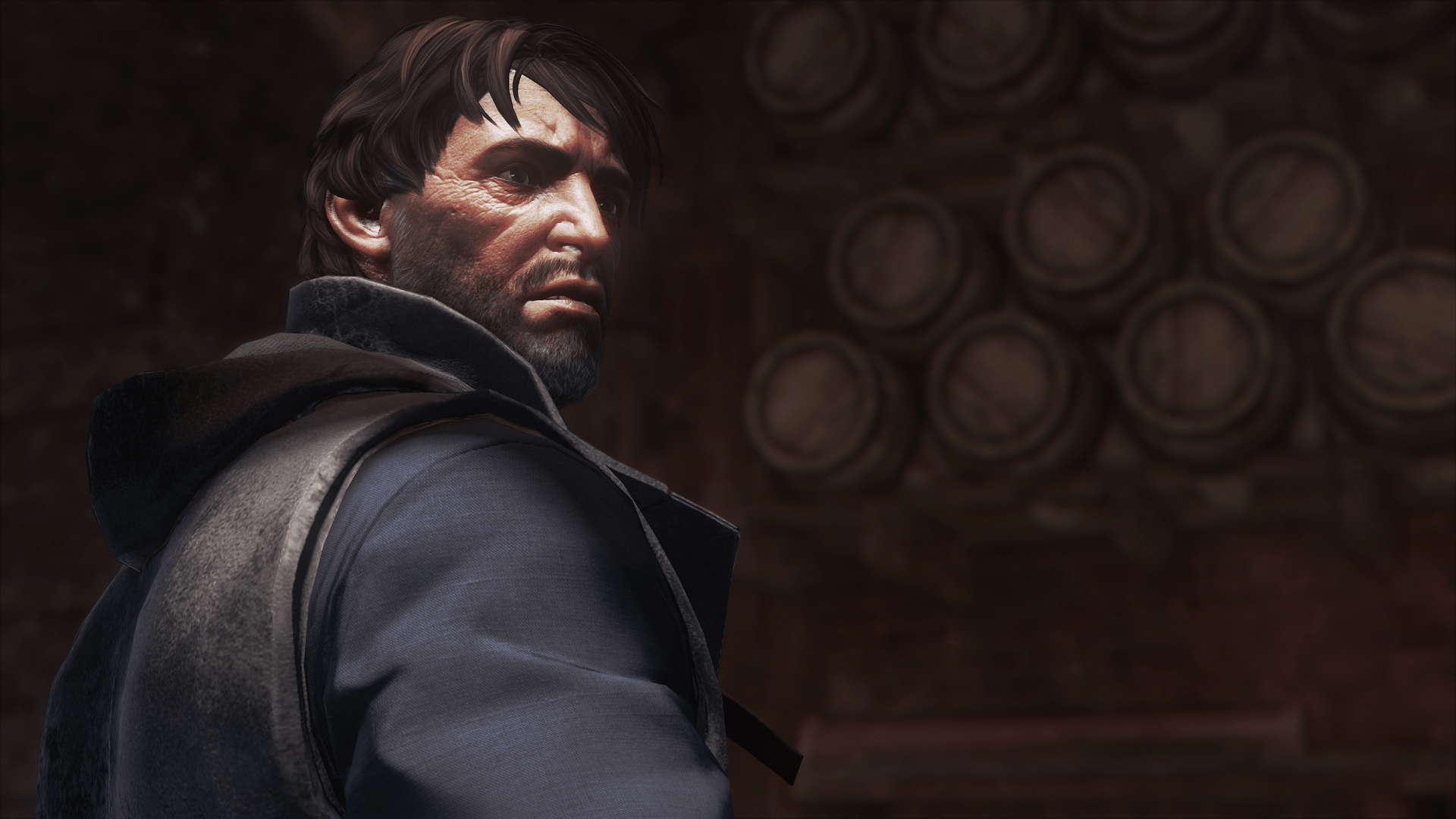
Developer Co-Creative Director Harvey Smith announced on Twitter that playing as Emily on Hard took him 15 hours to complete that particular playthrough. He did note, however, that with the studio's play tests, most people take between 16 and 20 hours to beat the game the first time. He added that their goal was to keep the game between 12 and 20 hours to make it more possible to play the game multiple times.
-
The Creative Kills of Dishonored 2
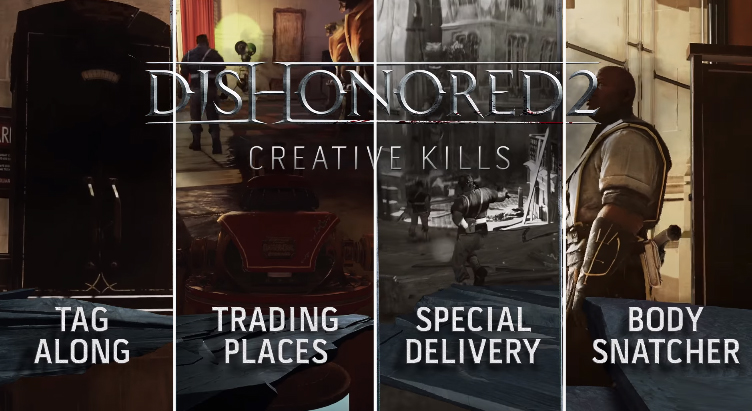
If you're planning a playthrough where you will kill nearly everyone and everything in sight, then Arkane Studios' "Creative Kills" trailer is a must see. Since we're pretty familiar with some of Corvo's skills already, the trailer mostly focuses on the nasty ways Emily can kill enemies. For instance, the "Creative Kills" trailer shows Emily's Domino, Far Reach, Doppelganger, Transposition, and Shadow Walk abilities.
-
Dishonored 2 Hands-on Preview
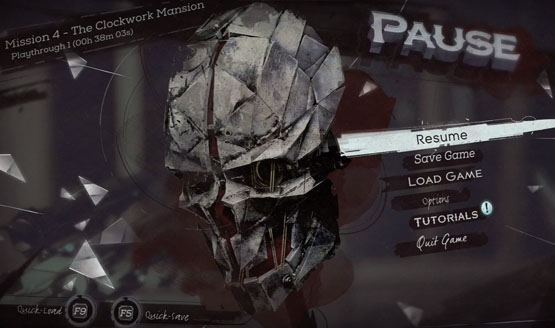
Just last month, we were able to get our hands on Dishonored 2 for the first time. Louis Edwards greatly enjoyed what he played, especially with the game's new spin on the chaos system, puzzle-solving, and options for how to deal with enemies. Check out his entire preview here.
-
Pre-Order Dishonored 2 and Play it a Day Early
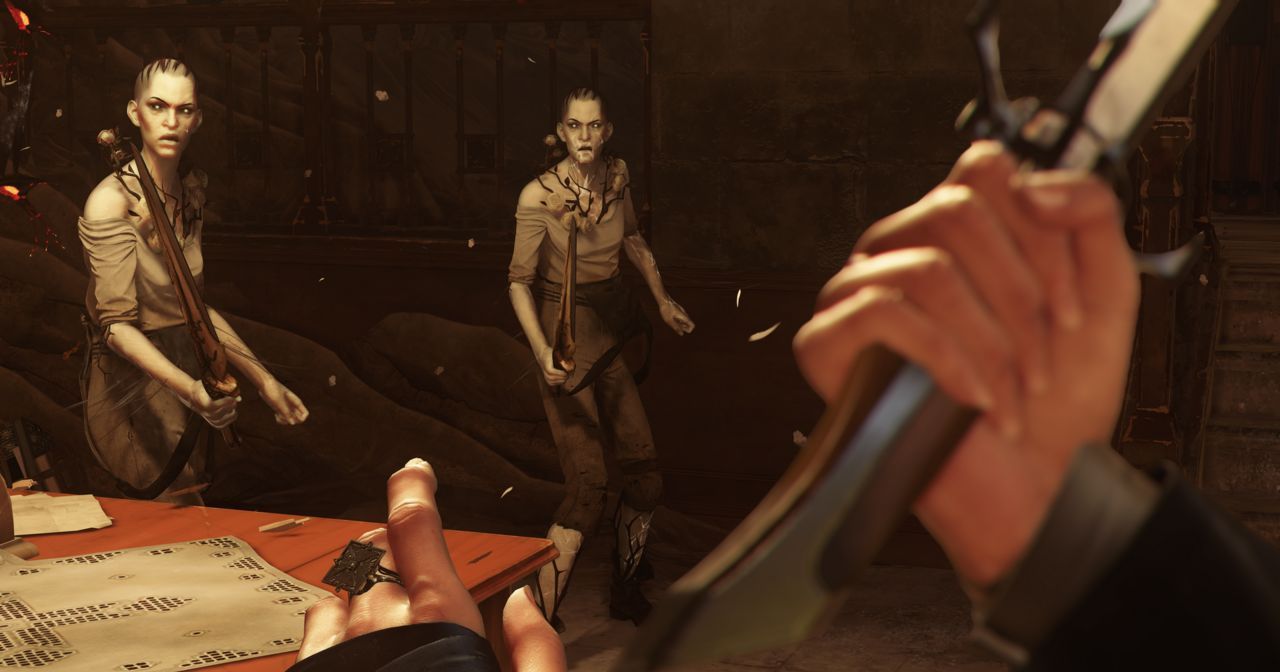
Bethesda has a couple of extra incentives for pre-ordering Dishonored 2, no matter if it's digital or at retail. Pre-ordering the game can net you a copy of Darksiders Definitive Edition, which is a current-generation version of the game with all of its DLC. In addition, all those who pre-order will be able to play the game one day before everyone else on November 10, 2016.
-
Player Has Many Options for Escaping at Their Disposal

The first Dishonored title had some pretty imaginative ways you could use to escape a precarious situation or the possibility of being seen. Dishonored 2 promises to have even more innovative methods for escape, as shown in their "Daring Escapes" trailer.
-
Live Action Trailer - Take Back What's Yours
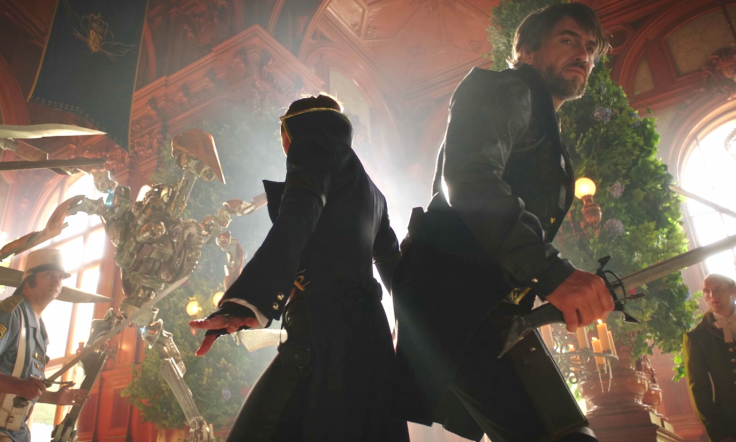
We love how beautiful games are, but live action trailers are also just as amazing and sometimes more thought-provoking or emotion-inducing. Take in point the live action trailer for Dishonored 2, which goes into a bit more about Corvo and Emily's reasoning for becoming assassins.
The following is Bethesda's statement on the live action trailer:
When Delilah, a mad witch armed with powerful black magic, seizes the throne and the fate of your Empire hangs in the balance, how far will you go to hunt down your enemies – and take back what’s yours?
-
You Can Pre-Load Dishonored 2 November 8th
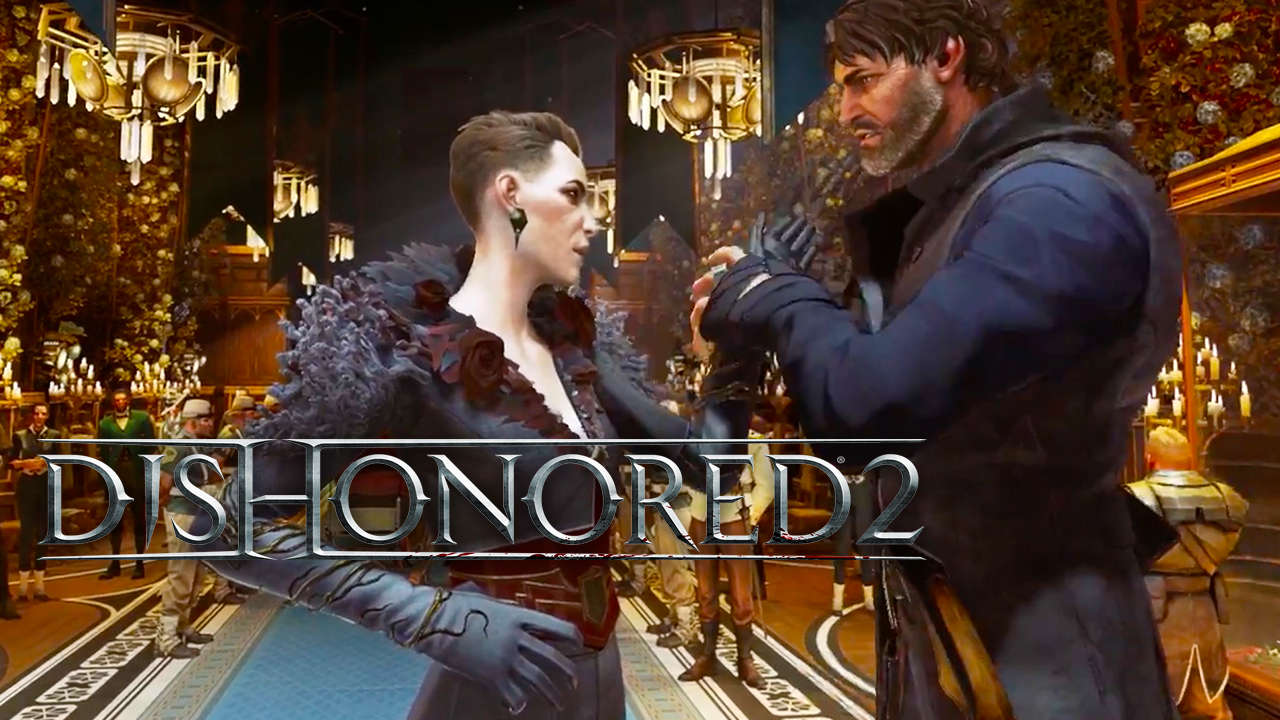
As of November 1st, Dishonored 2 has gone gold. Everyone who digitally preordered the title will be able to pre-load the game on November 8, 2016. By pre-loading, the game will instantly be ready for your enjoyment the second it unlocks.
-
It Will Take Two Playthroughs to Platinum
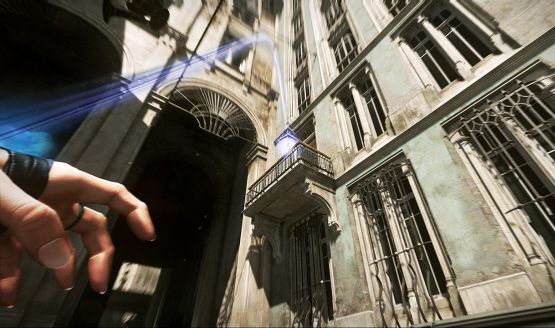
As suspected, it will take at least two playthroughs to earn a Platinum trophy for Dishonored 2. One trophy requires playing through with Emily, and another with Corvo. There are also two trophies for ghosting and not killing anyone, and then there's one that requires a whole lot of murder. Plan accordingly, trophy hunters! You can find the complete trophy list here.
